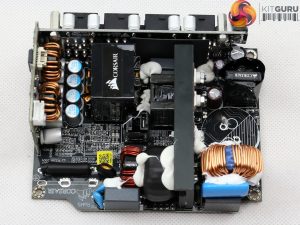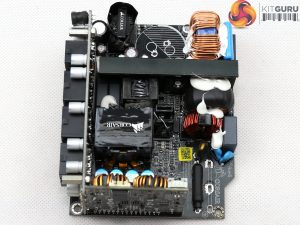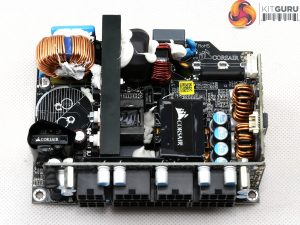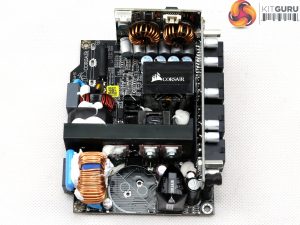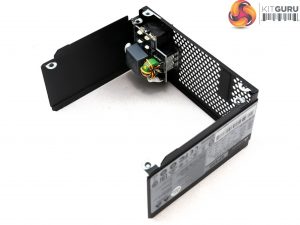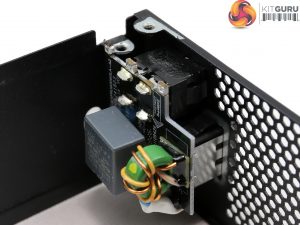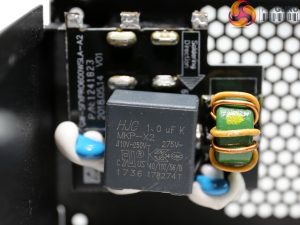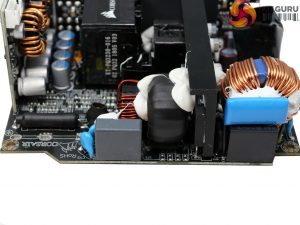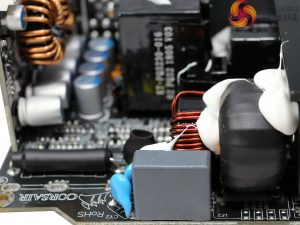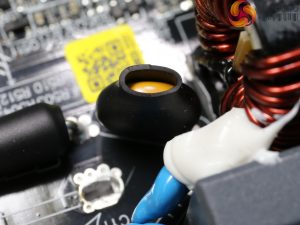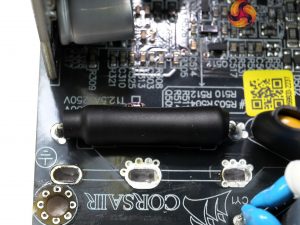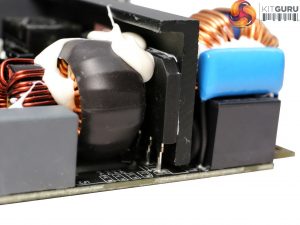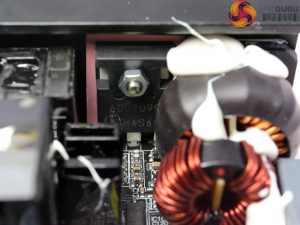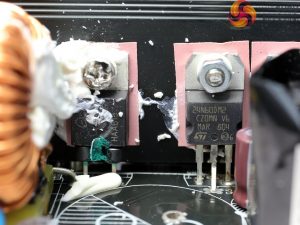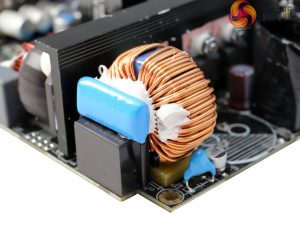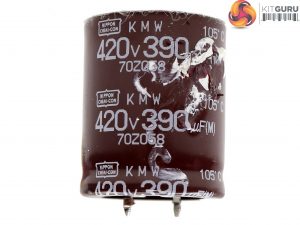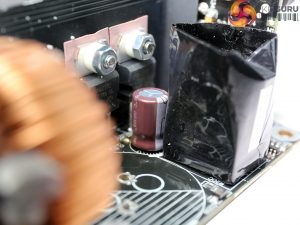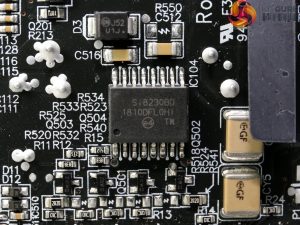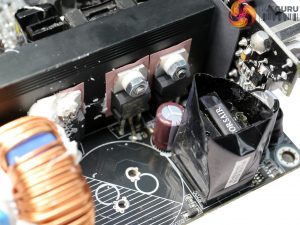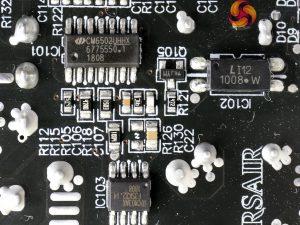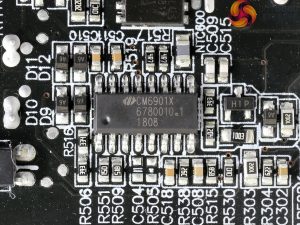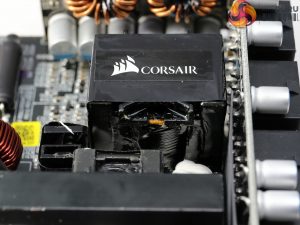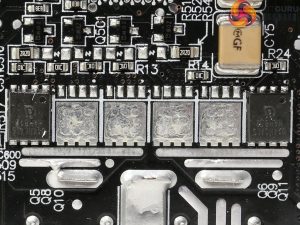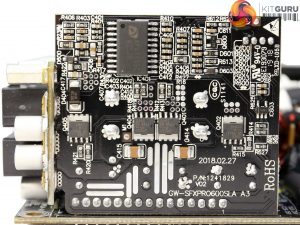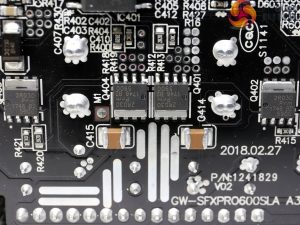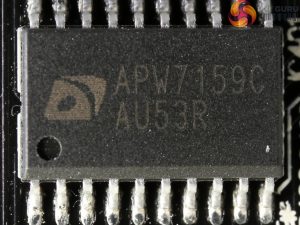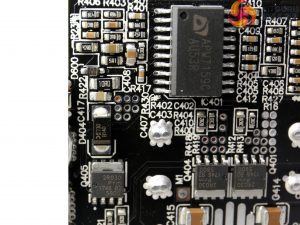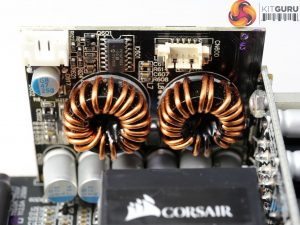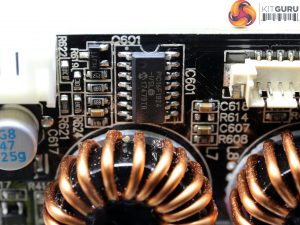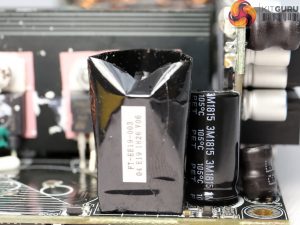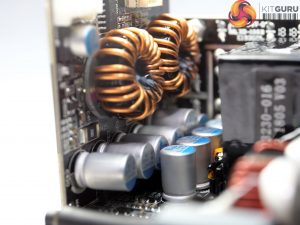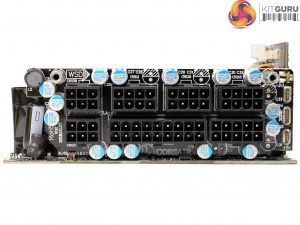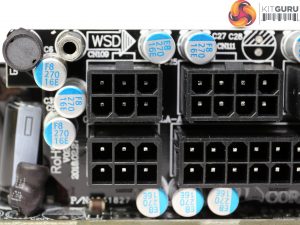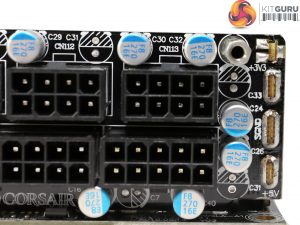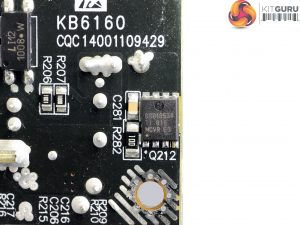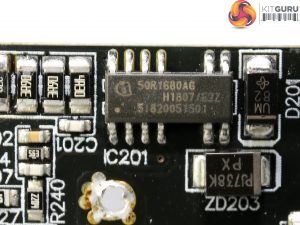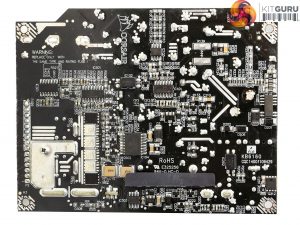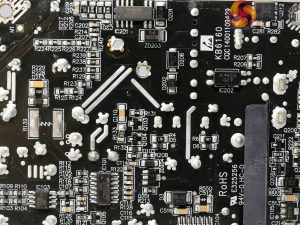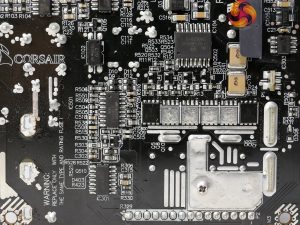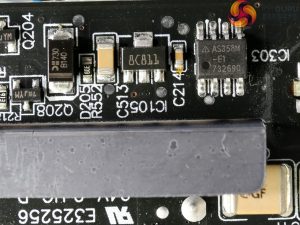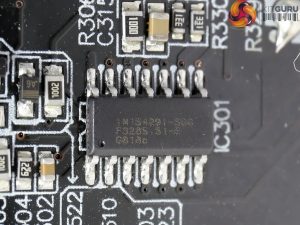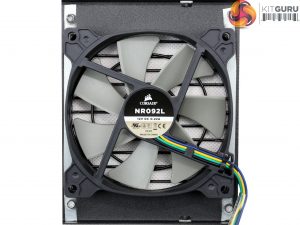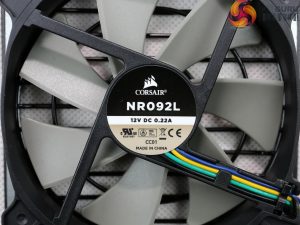| General Data | |
| Manufacturer (OEM) | Great Wall |
| Primary Side | |
| Transient Filter | 4x Y caps, 2x X caps, 3x CM chokes, 1x MOV |
| Inrush Protection | NTC Thermistor & Relay |
| Bridge Rectifier(s) |
1x GBU25KH (800V, 25A @ 125 °C)
|
| APFC MOSFET |
1x Infineon IPZ60R099C7 (650V, 14A @ 100°C, 0.099Ohm)
|
| APFC Boost Diode |
1x Infineon IDH06G65C6 (600V, 6A @ 145°C)
|
| Hold-up Cap(s) |
1x Nippon Chemi-Con (420V, 420uF, 2000h @ 105 °C, KMW)
|
| Main Switchers |
2x STMicroelectronics STP24N60DM2 (650V, 14A @ 100°C, 0.2Ohm)
|
| Driver IC |
Silicon Labs Si8230BD
|
| APFC Controller |
Champion CM6502UHHX & CM03AX Green PFC controller
|
| Resonant Controller |
Champion CM6901X
|
| Topology |
Primary side: Half-Bridge & LLC Resonant Controller
Secondary side: Synchronous Rectification & DC-DC converters |
| Secondary Side | |
| +12V MOSFETS | 2x Infineon BSC014N04LS (40V, 100A @ 100°C, 1.4mOhm) |
| 5V & 3.3V | DC-DC Converters: 4x Nexperia PSMN2R0-30YL (30V, 100A @ 25°C, 2mOhm) PWM Controller: Anpec APW7159C |
| Filtering Capacitors | Electrolytics: 2x Nippon Chemi-Con (4-10,000h @ 105°C, KY), 1x Rubycon (3-6,000h@ 105°C, YXJ) Polymers: Nippon Chemi-Con |
| Supervisor IC | IN1S429I -SCG |
| Fan Control MCU | PIC16F1824 |
| Fan Model | Corsair NR092L (92mm, 12V, 0.22A, 3950 RPM, rifle bearing) |
| 5VSB Circuit | |
| Rectifier |
1x CSD18534 FET (60V, 69A @ 25 °C, 7.8mOhm)
|
| Standby PWM Controller | Infineon ICE5QR1680AG |
The differences with the SF600 Platinum are few including the bulk cap in the APFC converter, the main switching FETs and the FETs that regulate the +12V rail. All the rest parts are exactly the same.
In the primary side a half-bridge topology along with an LLC resonant converter are used, while in the secondary side two FETs, instead of four in the 600W model, regulate the +12V rail. The minor rails are generated by two DC-DC converters and there are only three electrolytic caps, one of which belongs to the 5VSB circuit.
All the rest of the capacitors in the secondary side are polymers, which can cope much better with increased heat compared to electrolytic caps (but lack their capacity). In general this is a very well made platform, with lots of clearance in the secondary side for increased airflow.
A small PCB behind the AC receptacle holds one CM choke, two Y and one X caps. The second part of the EMI filter on the main PCB consists of the same number of Y and X caps, two CM chokes and an MOV that protects against spikes and power surges coming from the mains grid.
The single bridge rectifier is a powerful GBU25KH which can handle up to 25 Amps of current.
The APFC converter uses a single Infineon IPZ60R099C7 FET and a IDH06G65C6 boost diode, provided by the same manufacturer. As it seems Great Wall decided that there was no need for two FETs in this circuit, something that usually is the case in the majority of power supplies that we evaluate.
The bulk cap belongs to Chemi-Con's quality KMW line and has 420uF capacity, which is enough to provide 17ms of hold-up time. The NTC thermistor along with its bypass relay are located after the bridge rectifier and are installed below the PFC's input capacitor.
The pair of main FETs, two STMicroelectronics STP24N60DM2 is configured into a half-bridge topology. An LLC resonant converter boosts efficiency by reducing the switching losses. The driver IC of the main FETs is a Silicon Labs Si8230BD.
The APFC controller, a Champion CM6502UHHX, is supported by a CM03AX Green PFC controller. Both are installed on the solder side of the board. Close by we also find the resonant controller, the highly popular Champion CM6901X.
The main transformer.
The +12V rail is regulated by two Infineon BSC014N04LS FETs. As you can see there is room for four more FETs.
The voltage regulation modules that handle the minor rails share the same daughter-board with the fan control circuit. Four Nexperia PSMN2R0-30YL FETs are installed on this board and the common PWM controller is a Anpec APW7159C IC. The MCU that controls the fan's speed, through a PWM signal, is a PIC16F1824.
We only spot three electrolytic caps on the secondary side, with one of them belonging to the 5VSB circuit. The ripple filtering on all rails is mostly handled by polymer caps.
We find a great number of polymer caps on the modular board, while at its back there are also a lot of MLCC caps, for high frequency ripple filtering.
The 5VSB circuit includes a CSD18534 FET and its PWM controller is a Infineon ICE5QR1680AG.
The soldering quality is very good, as we expect in a high-end product like this one.
The supervisor IC is a IN1S429I -SCG, for which we couldn't find any information on the internet.
The cooling fan's model number is NR092L and it uses a rifle bearing. Thanks to the optimized design and the relaxed speed profile which is controlled through a PWM signal, the fan doesn't make much noise.
The semi-passive operation also plays a significant role in this unit's quiet operation, however it would be nice if it could be deactivated.
 KitGuru KitGuru.net – Tech News | Hardware News | Hardware Reviews | IOS | Mobile | Gaming | Graphics Cards
KitGuru KitGuru.net – Tech News | Hardware News | Hardware Reviews | IOS | Mobile | Gaming | Graphics Cards


